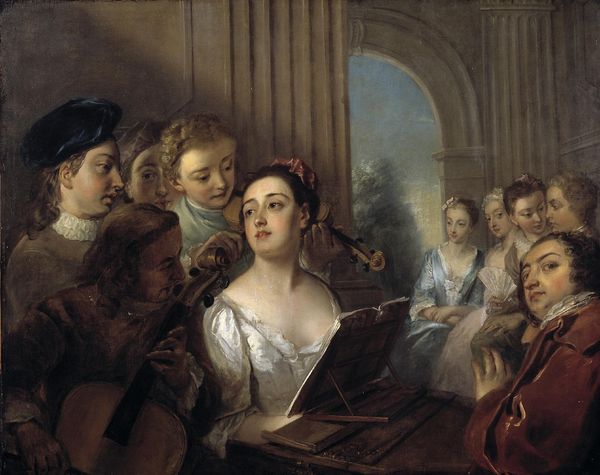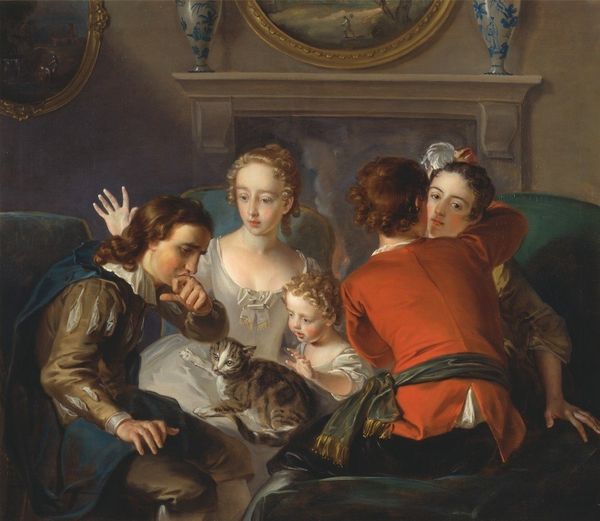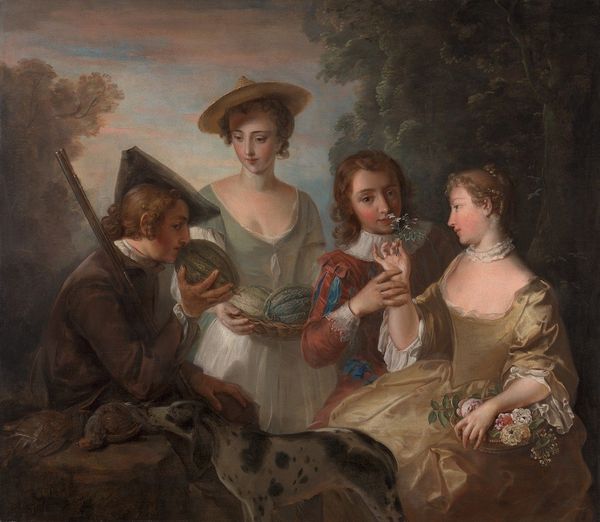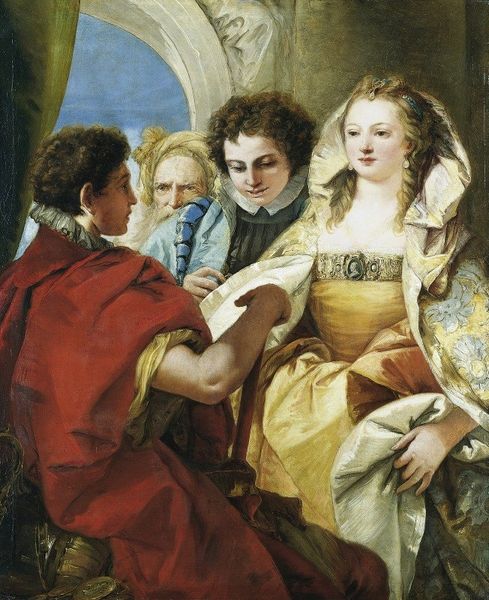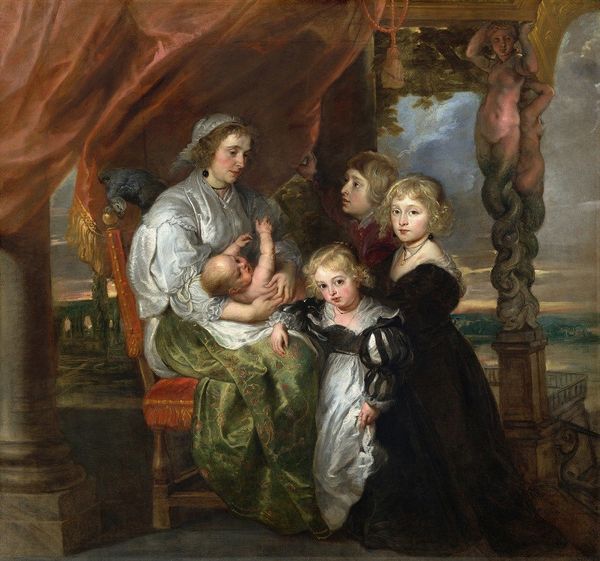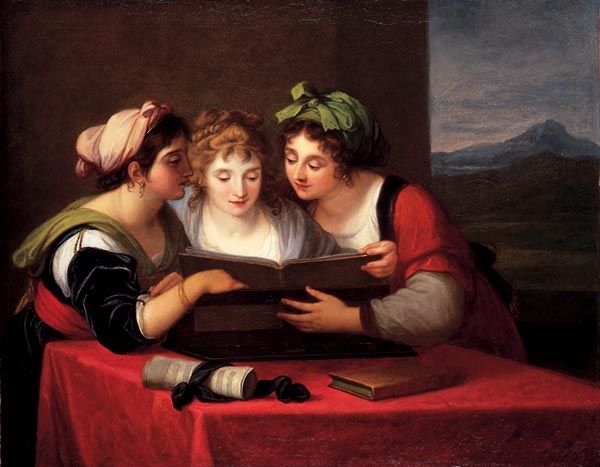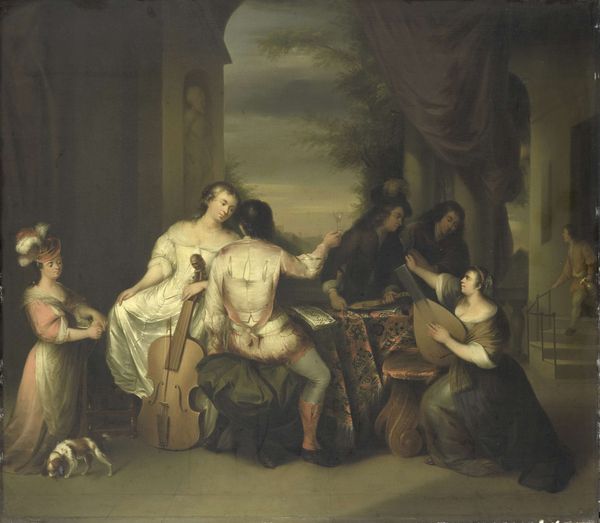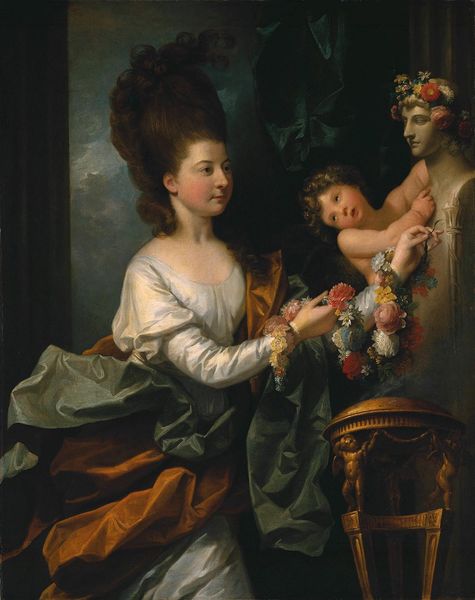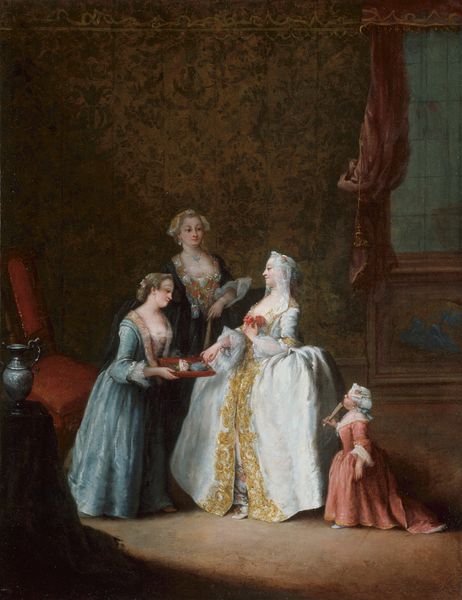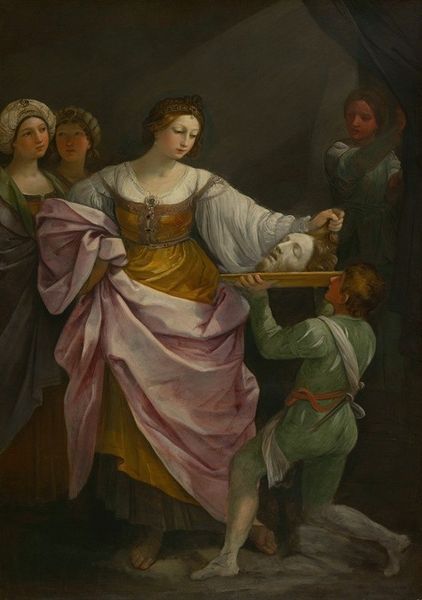
painting
#
portrait
#
character pose
#
figurative
#
character portrait
#
baroque
#
painting
#
figuration
#
portrait reference
#
portrait head and shoulder
#
portrait drawing
#
genre-painting
#
facial portrait
#
portrait art
#
fine art portrait
#
celebrity portrait
#
digital portrait
Copyright: Public Domain: Artvee
Editor: We are looking at "School for Girls" by Philippe Mercier. It seems to depict an instructor with a group of young women, perhaps practicing etiquette or deportment. There’s almost a theatrical quality to it, like a staged scene. What can you tell me about this type of genre painting? Curator: Mercier was an interesting figure who helped introduce Rococo sensibilities to Britain, after training in places like Berlin, London and Italy. So, rather than focus on grand history painting which was a very dominant type of artwork at the time, he was much more concerned with informal scenes of fashionable life. It really marked a change in how art was seen and who it was for. How do you see this piece in relation to that shift? Editor: I see how it challenges this established high art. The subjects here aren't gods or heroes, but these young women involved in everyday activities of the time. There's an emphasis on the social sphere and almost a type of gentle moral instruction, perhaps, but nothing especially groundbreaking at first glance. Is there another perspective? Curator: Absolutely. Think about it, what does the existence of "schools for girls" themselves imply about social structure and expectation? Who were these girls? What class might they be from to be learning these accomplishments and refinements? Who did Mercier envision his audience to be for paintings like this? Editor: That gives it a totally new meaning! It becomes less about everyday life, but rather a portrait of social aspiration, educational inequality, gender norms, and emerging class structures, right? Mercier's challenging established social hierarchies and making his own commentary. Curator: Exactly. He's depicting a world in transition, one where education and social graces were increasingly valued – and also markers of privilege. By depicting this "genre scene," Mercier is engaging in the social discourse of his time and how cultural capital was obtained and performed, even among young women. Editor: This was quite the insight. Now I see how the school room setting can reveal societal power structures through something as seemingly gentle as an everyday genre painting. Thank you for elaborating.
Comments
No comments
Be the first to comment and join the conversation on the ultimate creative platform.
